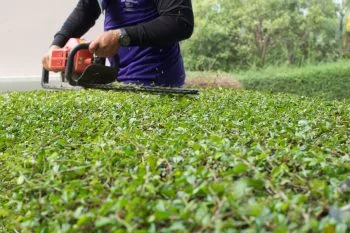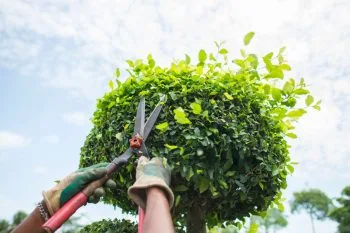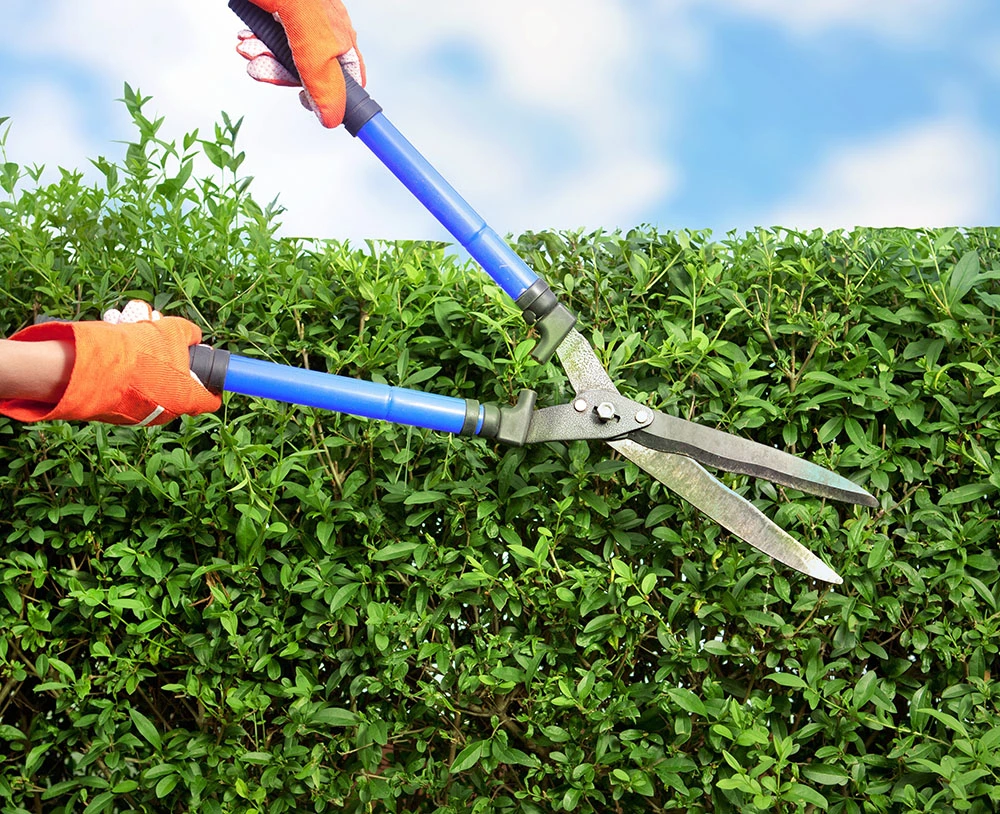
Shrub Trimming is a big part of gardening. Plants need to be trimmed in order to maintain their shape and to keep them from becoming overgrown.
This process, when done correctly, allows for new, healthy growth. Top horticulturists consider trimming to be both an art as well as a science.
Many people confuse pruning with trimming and that’s because the differences are subtle. For more details on pruning, check on this article titled, “Follow Proper Pruning Techniques,” by Douglas F. Welsh and Everett Jane, two renowned horticulturists from Texas A&M University.
Pruning has more to do with removing dead, diseased, or unnecessary branches. While trimming has more to do with how a plant looks.
The big question everyone has though is, how often should I be trimming? It’s a great question because trimming too much or too little can both have negative results. I plan to clear that question up today with the information provided in this article.
Timing is everything
If you trim your bushes at the right time, you will have robust, good-looking shrubs. Proper trimming will also help improve the strength of your bushes.
Trimming too often will result in damaged and weakened shrubs. This will make it difficult for the plant to replenish itself.
On the other hand, if you wait too long, your shrub will become a monstrosity. Overgrown bushes can quickly become annoying as well as dangerous when they obstruct walkways and paths.
Deciduous and evergreen shrubs should be trimmed in late winter or early spring before new growth begins. Do not remove low branches as this will ruin the natural shape of the bush.
RELATED TIP: How to Prevent Weeds from Growing in Rocks
Trim evergreens cautiously because they cannot tolerate excessive trimming. The exceptions to this rule are arborvitae and yew shrubs.
Bushes that have spring flowers should be trimmed after they have bloomed. This will foster new growth and will help to produce an abundance of flowers.
Roses should also be trimmed sometime in late-winter through early spring, depending on the climate in your city. Everything you need to know about roses is detailed in this Agrilife Extension article titled, “Rose Care and Fertilization.”
Keep an eye on things

The best advice I can give you when it comes to trimming bushes, is just keep an eye on things. When you see something out of order, fix it.
Every other month, take a close look at your landscape. Look for any shoots that are out of place and trim as necessary.
After a storm or heavy winds, take a walk around your yard and check for any broken or damaged branches. You may trim damaged branches at any time of the year.
Always immediately remove any branches that have begun to impede or block a walkway. This also rings true when bushes begin to grow too close to your house. Trim before the bush gets out of control.
If you happen to notice and bushes that did not survive the winter, check out this article titled, “How to Remove a Large Shrub.” This article will explain exactly what you need to do.
Tools
Using the correct tools will ensure that you get the job done right the first time. Different plants will need to be trimmed with different tools based on their size and shape.
RELATED TIP: Plants for Walkway Landscaping
Keep your tools in good shape. This means cleaning them after each use. Hose or wipe them down after each use and then dry thoroughly. Wet soil left on tools causes corrosion.
Store your tools in a dry area. Never leave tools outside, unprotected.
If needed, apply oil to the pivot joints. This also works as a rust preventer.
Sand down wood handles as needed. At least once a year, sharpen your tools.
Final Thoughts
The point of trimming is to cultivate the aesthetics and overall appearance of your bushes. Some people trim periodically all throughout the year, while others trim just once or twice a year.
The amount of trimming needed depends a great deal on the plants chosen. Choose plants that will only grow as big as the space allotted. Then you will have to trim less.
The timing and frequency of trimming will have a big impact on your success. When in doubt, hire a professional like Evergreen Lawn & Landscape to handle your shrub trimming for you.
Another one of our specialities is tree trimming. Don’t risk climbing up on a high ladder. Let us do the work for you.



Comments (0)
Thanks for your comment!
Thanks for your feedback! Your comments have been successfully submitted! Please note, all comments require admin approval prior to display.
Error submitting comment!
There is a problem with your comment, please see below and try again.